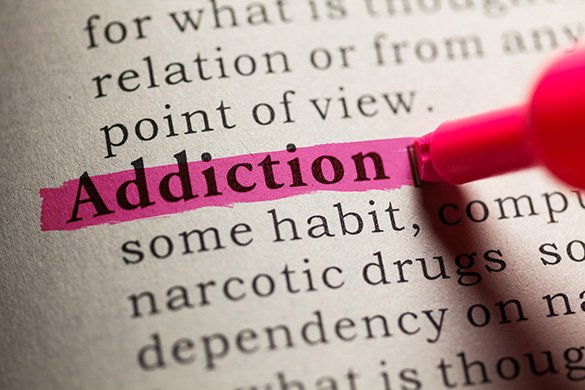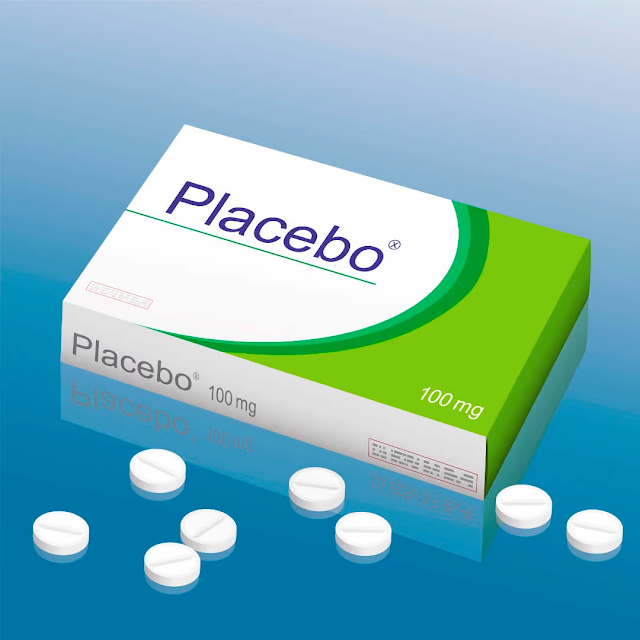The Brain Science of Addiction
Claudia Alvarado-Sasse is a Clinical Mental Health Counseling student at the University of San Diego. After working with the San Diego community for over 10 years and seeing firsthand the high need for culturally competent, accessible, and adequate mental health services, she became motivated to pursue her master's degree to help address this gap and bring high quality mental health services to all. Claudia speaks Spanish, English, a little Brazilian Portuguese and is very fluent in Spanglish.
Addiction
Addiction has been, and continues to remain, a heavily stigmatized health problem in our society. People who experience addiction to drugs and/or alcohol have often been perceived as failing morally and having no willpower to stop. Although addiction research began around the late 19th century (Musto, 1996), it wasn’t until 1956 when the American Medical Association (AMA) declared alcoholism an illness, and eventually in 1987, it became declared as a disease (Bettinardi-Angres & Angres, 2010).
The Diagnostic and Statistical Manual of Mental Disorders (DSM-5) defines addiction, or substance use disorder, as “a cluster of cognitive, behavioral, and physiological symptoms…” indicating the ongoing use of mood-altering substances, such as alcohol and drugs, despite having significant substance-related problems (DSM-5, 2013). As more research is conducted on addiction, we have learned that “addiction is a medical disorder that affects the brain and changes behavior” (National Institute on Drug Abuse, 2023). In the 1980’s, with the development of brain imaging technology, researchers found significant changes in the brains of addicted individuals compared to those of non-addicted individuals that could perhaps explain drug taking behaviors.
Source: Face It Together “Common Myths About Addiction” https://www.wefaceittogether.org/learn/common-myths
Bettinardi-Angres, K., & Angres, D. H. (2010). Understanding the disease of addiction. Journal of Nursing Regulation, 1(2), 31–37. https://doi.org/10.1016/s2155-8256(15)30348-3
Common Myths About Addiction. (n.d.). Common myths about addiction. Face It Together. https://www.wefaceittogether.org/learn/common-myths
Institute of Medicine (US) Committee on Opportunities in Drug Abuse Research. Pathways of Addiction: Opportunities in Drug Abuse Research. Washington (DC): National Academies Press (US); 1996. B, Drug Abuse Research in Historical Perspective. Available from: https://www.ncbi.nlm.nih.gov/books/NBK232965/
NIDA. 2023, May 30. Drugs, Brains, and Behavior: The Science of Addiction. Retrieved from https://nida.nih.gov/research-topics/addiction-science/drugs-brain-behavior-science-of-addiction on 2023, July 12
Corrigan P, Schomerus G, Shuman V, Kraus D, Perlick D, Harnish A, Kulesza M, Kane-Willis K, Qin S, Smelson D. Developing a research agenda for understanding the stigma of addictions Part I: Lessons from the Mental Health Stigma Literature. Am J Addict. 2017 Jan;26(1):59-66. doi: 10.1111/ajad.12458. Epub 2016 Oct 25. PMID: 27779803.
U.S. Overdose Deaths In 2021 Increased Half as Much as in 2020 – But Are Still Up 15%. (2022, May 11). U.S. overdose deaths in 2021 increased half as much as in 2020 - but are still up 15%. Centers for Disease Control and Prevention. https://www.cdc.gov/nchs/pressroom/nchs_press_releases/2022/202205.htm
Volkow, N. (2018, March 23). What does it mean when we call addiction a brain disorder?. National Institutes of Health. https://archives.nida.nih.gov/news-events/noras-blog/2018/03/what-does-it-mean-when-we-call-addiction-brain-disorder
The Diagnostic and Statistical Manual of Mental Disorders (DSM-5) defines addiction, or substance use disorder, as “a cluster of cognitive, behavioral, and physiological symptoms…” indicating the ongoing use of mood-altering substances, such as alcohol and drugs, despite having significant substance-related problems (DSM-5, 2013). As more research is conducted on addiction, we have learned that “addiction is a medical disorder that affects the brain and changes behavior” (National Institute on Drug Abuse, 2023). In the 1980’s, with the development of brain imaging technology, researchers found significant changes in the brains of addicted individuals compared to those of non-addicted individuals that could perhaps explain drug taking behaviors.
The good news is that addiction is a preventable, treatable disorder, and recovery is possible!
Understanding that addiction is “a chronic but treatable medical condition involving changes to circuits involved in reward, stress, and self-control” helps in identifying relevant therapeutic interventions. These then lead to improved ways of delivering addiction treatments in healthcare and reducing stigma (NIDA, 2018). This understanding of addiction as a disease takes into consideration the complex interactions between biology, behavior and environment.Below are some common myths and facts about addiction:
Myths |
Facts |
| Using drugs or alcohol is a choice, if someone gets addicted, it’s their fault | No one would choose addiction. Addiction is a consequence of many contributing factors, including genetics, upbringing, trauma and other influences. |
| People with addiction are bad and need to be punished | Sometimes, after prolonged substance use, people with addiction may lie, cheat, steal, or worse to keep using. While this behavior can’t be condoned, it’s important to understand they do it because they need help. Sick people need treatment, not punishment, to get well. |
| If someone just uses their willpower, they should be able to stop | Substance use can lead to profound changes in the brain. These changes hijack the natural “reward pathway” of the brain. When addiction takes hold, these changes in the brain erode a person’s self-control and ability to make good decisions, while sending highly intense impulses to take drugs. These are the same circuits linked to survival, driving powerful urges no different from those driving the need to eat or drink water. |
| People have to hit “rock bottom” before they get well | The longer you wait, the sicker the person gets, and this can have deadly consequences. People who get help before addiction is severe have more resources to draw upon, such as supportive family or a job, to help them successfully recover. So the sooner someone gets help, the better. |
| Going to treatment alone will fix the problem | Addiction is a chronic disease, which means it's a long-lasting condition that can be controlled but not cured. Treatment can be the first step toward wellness. Many people need more than one treatment visit to get on a stable path to wellness. Staying well requires a lifelong commitment to managing symptoms, developing new coping skills and seeking the necessary support. |
| Prescription drugs are not addictive like street drugs because they come from a doctor | Addiction to prescription medications, including painkillers, sedatives and stimulants, is a serious and growing problem among all age groups. These drugs can be highly addictive and have serious harmful effects. Even if these drugs are prescribed by your physician, you may be at risk. |
| If someone relapses, the person’s situation is a lost cause | Try not to be too discouraged by a relapse, which is a recurrence of symptoms. Addiction is a chronic illness very similar to type II diabetes or hypertension, meaning it requires lifelong management. Getting well involves changing deeply embedded behaviors. This takes time and effort, and sometimes results in setbacks. This doesn’t mean previous treatments failed, because the person with addiction still made progress overall in getting well. A recurrence may be a sign that the treatment approach or other supports need to change, or that other treatment methods are needed. There is hope. Keep in mind that most people with addiction who experience a recurrence will return to recovery. |
If you, or someone you know is experiencing problems with substance use, see the resources below for more information on how to get support:
- MiraCosta Student Health Services:
- Individual Counseling & Recovery Support Group
- Oceanside Campus: Room 3326
- San Elijo Campus: Room 917
- Phone: (760) 795-6675
- Email: mccshs@miracosta.edu
- Webpage & contact form: www.miracosta.edu/healthservices
- Off campus resources:
- San Diego County Access & Crisis Line:
- (888) 724-7240
- https://up2sd.org/
- Operates 24/7
- Call if you are concerned about someone, just need to talk, have questions about how to offer support, or if you are looking for information about community resources, mental health referrals, and alcohol and drug support services.
- Substance Abuse and Mental Health Services Administration (SAMHSA):
- (800) 662-HELP (4357) or TTY: (800) 487-4889
- Also known as the Treatment Referral Routing Service
- Confidential, free, 24-hour-a-day, 365-day-a-year, information service, in English and Spanish, for individuals and family members facing mental and/or substance use disorders.
- This service provides referrals to local treatment facilities, support groups, and community-based organizations.
- You can also visit the online treatment locator, or send your zip code via text message: 435748 (HELP4U) to find help near you
- San Diego Network of Care for Behavioral Health:
- https://sandiego.networkofcare.org/mh/index.aspx
- This website is a resource for individuals, families and agencies concerned with behavioral health.
- It provides information about behavioral health services, laws, and related news, as well as communication tools and other features.
- Regardless of where you begin your search for assistance with behavioral health issues, the Network of Care helps you find what you need - it helps ensure that there is "No Wrong Door" for those who need services.
- Additional Resources:
- Psychology Today:
- How to Help Someone Who is Addicted https://www.psychologytoday.com/us/basics/addiction/how-help-someone-who-is-addicted#what-if-a-loved-one-refuses-to-get-help
- National Institute on Drug Abuse (NIDA) Video:
- Why Are Drugs So Hard to Quit? https://www.youtube.com/watch?v=YefKGTu_Xf8
References:
APA. (2022). Diagnostic and statistical manual of mental disorders: DSM-5-TR(TM). American Psychiatric Publications Inc.Bettinardi-Angres, K., & Angres, D. H. (2010). Understanding the disease of addiction. Journal of Nursing Regulation, 1(2), 31–37. https://doi.org/10.1016/s2155-8256(15)30348-3
Common Myths About Addiction. (n.d.). Common myths about addiction. Face It Together. https://www.wefaceittogether.org/learn/common-myths
Institute of Medicine (US) Committee on Opportunities in Drug Abuse Research. Pathways of Addiction: Opportunities in Drug Abuse Research. Washington (DC): National Academies Press (US); 1996. B, Drug Abuse Research in Historical Perspective. Available from: https://www.ncbi.nlm.nih.gov/books/NBK232965/
NIDA. 2023, May 30. Drugs, Brains, and Behavior: The Science of Addiction. Retrieved from https://nida.nih.gov/research-topics/addiction-science/drugs-brain-behavior-science-of-addiction on 2023, July 12
Corrigan P, Schomerus G, Shuman V, Kraus D, Perlick D, Harnish A, Kulesza M, Kane-Willis K, Qin S, Smelson D. Developing a research agenda for understanding the stigma of addictions Part I: Lessons from the Mental Health Stigma Literature. Am J Addict. 2017 Jan;26(1):59-66. doi: 10.1111/ajad.12458. Epub 2016 Oct 25. PMID: 27779803.
U.S. Overdose Deaths In 2021 Increased Half as Much as in 2020 – But Are Still Up 15%. (2022, May 11). U.S. overdose deaths in 2021 increased half as much as in 2020 - but are still up 15%. Centers for Disease Control and Prevention. https://www.cdc.gov/nchs/pressroom/nchs_press_releases/2022/202205.htm
Volkow, N. (2018, March 23). What does it mean when we call addiction a brain disorder?. National Institutes of Health. https://archives.nida.nih.gov/news-events/noras-blog/2018/03/what-does-it-mean-when-we-call-addiction-brain-disorder




Comments
Post a Comment